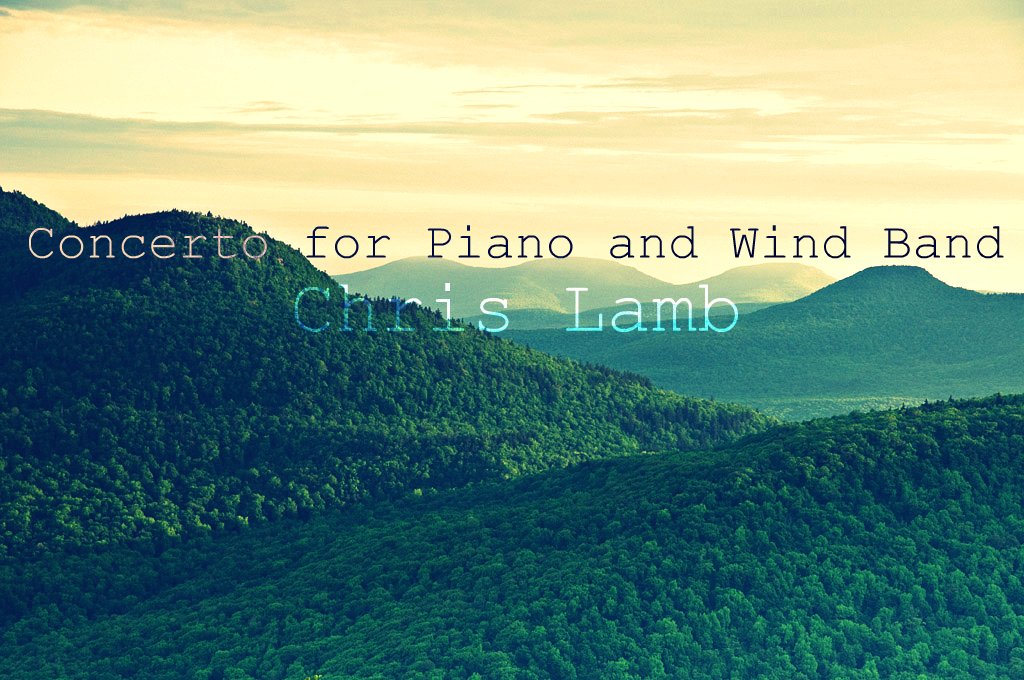Concerto for Piano and Wind Band (2010)
For Solo Piano and Wind Band
Duration: 18'30
Program Notes
I. Allegro agitato
II. Largo semplice
III. Allegro vivace
The Concerto for Piano and Wind Band was composed between August 2009 and April 2010. In many ways the composition is structured in the Romantic, three-movement style.
The first movement begins right away with the pulsating ostinato that is present for much of the movement. The movement is structure in an arch form, beginning with an A section which is dominated by uninterrupted eighth notes. This pattern of continuous eighths remains until the pianist briefly switches to a triplet feel which slows to an arrival. This arrival marks the beginning of the B section which contrasts the A section in that it is much more lyrical and is to be played in a singing style. However the eighth note feel returns this time in the marimba. The C section which follows continues the eighths, this time in a more blatant fashion. The D section marks the end of the eighth note pattern. This section acts as a brass feature which leads to the climax and the tip of the arch.
The pianist then begins his cadenza. The cadenza forms the other side of the arch as it revisits the segments beginning with the D section and finishing with the A. The cadenza leads into a coda which the winds take over and finish the movement.
The second movement is a stark contrast to the first. Instead of constant drive and pulsating eighths, the bassoons begin the movement with perfect fifths. The piano begins the primary melody. The movement conveys a folk melody from the use of fifths and the six-eight time signature.
The third and final movement acts as a gigue to finish the piece. It is a high octane thrill ride from start to finish. The movement uses melodies and gestures from the previous two movements as well as developing its own melodic line which culminates in the busy fugue.
-Chris Lamb, July 2010
Instrumentation
Piccolo
2 Flutes
2 Oboes
3 Bb Clarinets
Bass Clarinet
2 Bassoons
2 Alto Saxophones
Tenor Saxophone
Baritone Saxophone
Solo Piano
4 Horns in F
4 Trumpets in Bb
2 Tenor Trombones
Bass Trombone
Euphonium
Tuba
Timpani
2 Percussionists
Percussion 1: Triangle, Snare Drum, Temple Blocks, Suspended Cymbal, Splash Cymbal
Percussion 2: Snare Drum, Bass Drum, Bells, Marimba
